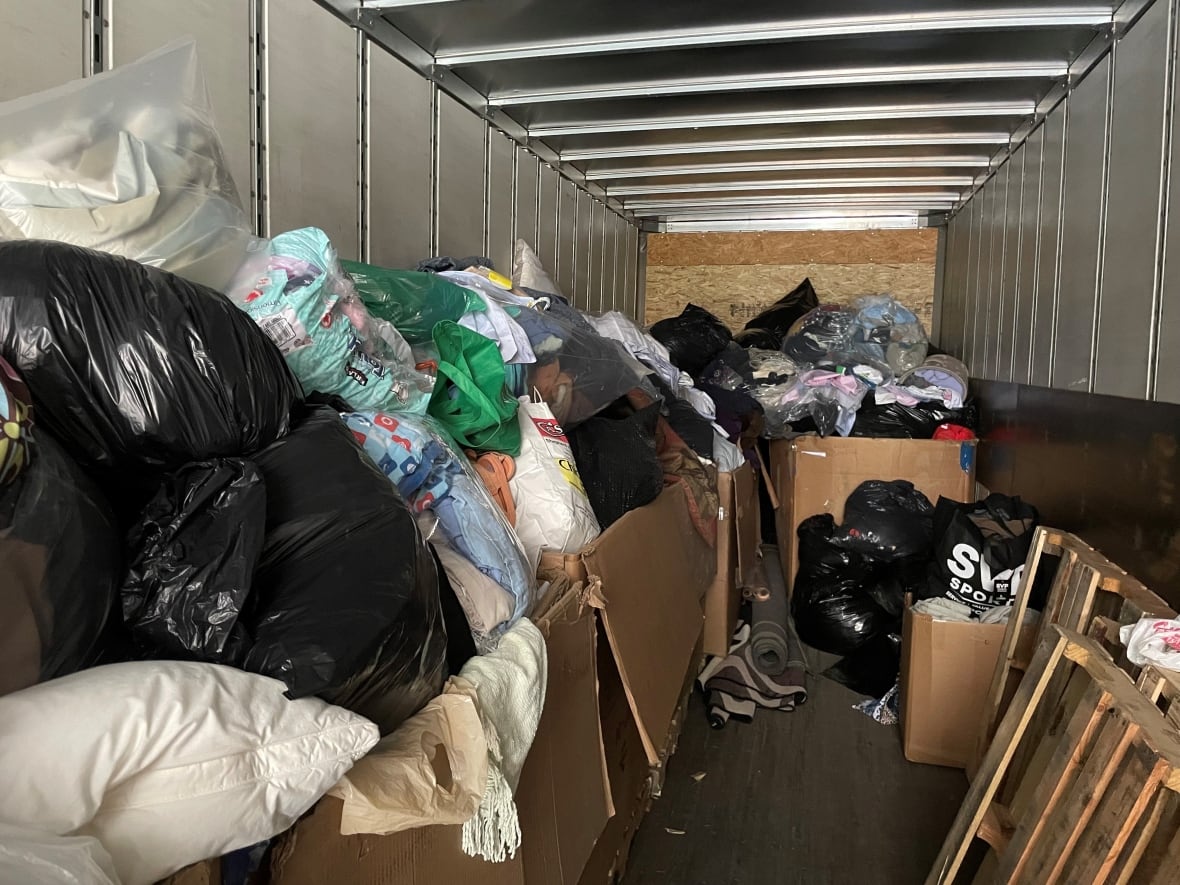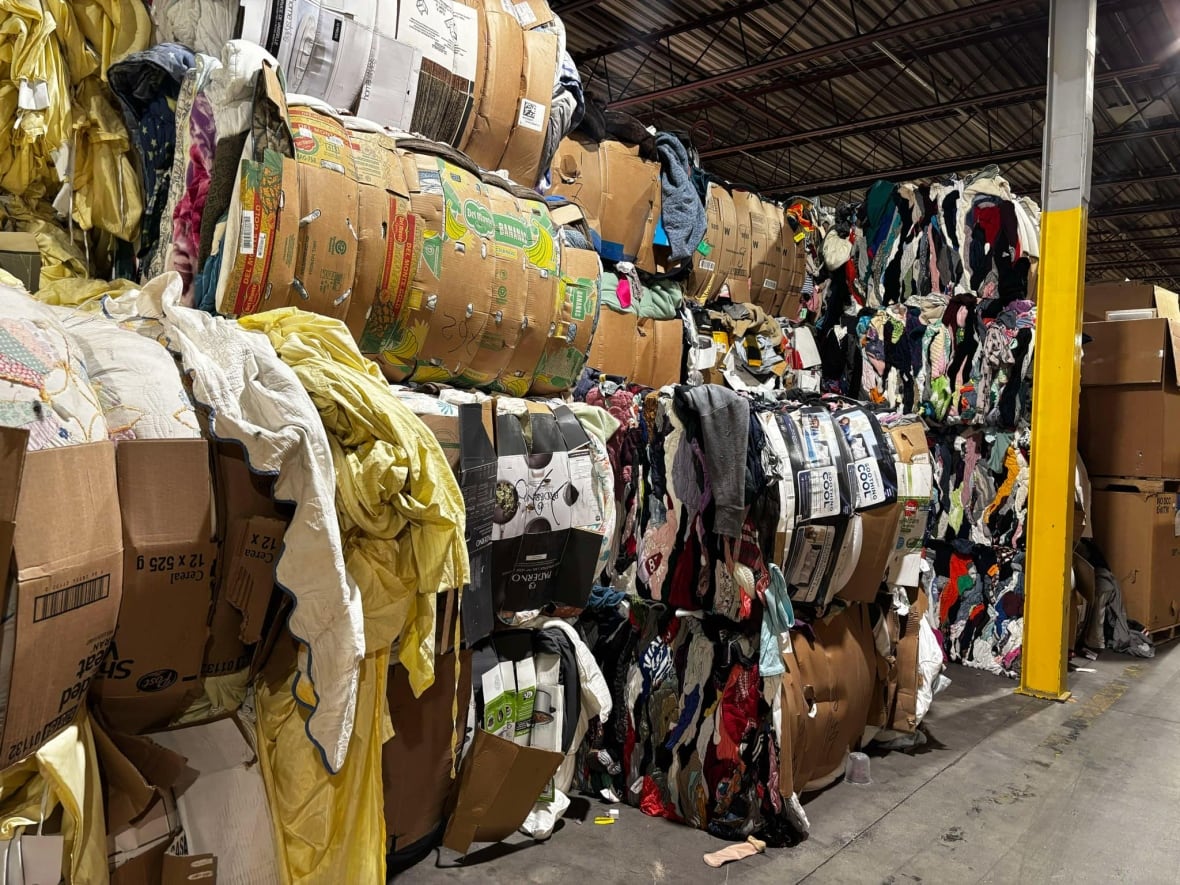Thinking about tossing your ripped and stained clothes? The city wants them

More than 9,000 kilograms of Londoners' old clothing, linens and other textiles are on their way to being sorted and given a second life through a new city-run recycling project.
For the past two weeks, people have been donating their used goods to a textiles donation centre at the Goodwill depot in Byron, including items that are ripped, stained and would otherwise be thrown out.
Items collected will then be sorted into things that can be reused, upcycled or completely broken down into new unexpected materials, organizer say.
"There may be a perception out there that [some items] are not worthy to be donated," said Rainer Voigt, the vice president of operations and sustainability at Goodwill Ontario Great Lakes.
"If it's a t-shirt you've had, and it's pilled, you might think 'I don't want to donate it because I'm embarrassed because it's low quality or something,'" Voigt said. "We are messaging that there are alternatives for it."

The Worn or Torn drive is co-organized by the City of London, Goodwill Industries and Fanshawe College, who are trying to prevent reusable materials from being tossed in the garbage.
Between 3,000 and 6,000 tonnes of textiles go to London's landfill every year, according to the city's director of climate change, environment and waste management Jay Stanford.
"It represents a lot of material that could be recovered by Londoners," he said.
"Not everyone knows when something is reusable or recyclable, so the purpose of our program is to bring everything to us, including items that are worn and torn, and the decision on how they're handled next is made by Goodwill," Stanford said, adding that more than 700 people have brought in donations so far.
Visiting Goodwill's London sorting facility
After the collection in Byron ends, the donations will be moved to Goodwill's sorting facility in south London, where team members will separate items that are reusable, recoverable and end-of-life.
"Reusable would refer to things that we would sell back in our store. Recoverable are things that, when we partner with upcyclers, they can take that garment, reconstruct it into something else and sell it again," Voigt explained.
"End-of-life is exactly what it means … We cannot upcycle it into something else, we can't sell it in our stores for whatever reason, so the question is what other options are available to us?," he said.
Clothes can be broken down and reused through mechanical and chemical recycling processes, Voigt said, and turned into car insulation, plastic water bottles and knife handles, but that can sometimes be complicated.
"When it comes to recycling textiles, we need to look at fabrication and we need to look at disrupters on the garment, so the buttons, zippers, patches and labels," he said. "For example, car insulation has very specific requirements on what the feedstock needs to look like. In order to give them what they need, there is a process that we need to go through in order to make the product as clean as possible."
"It would be easier to just toss it into the garbage. That's not what we're doing here," he said.
Last resort options for old textiles include cutting them to sell as rags, or bundling large quantities and sending them to markets overseas, Voigt said, and some items ultimately end up in the landfill.

Following the sorting process, Goodwill will inform the city on how many donations were actually reused, Stanford said, which will help them decide whether to run the project in other neighbourhoods.
"We're all trying to reduce the amount of waste we place at the curb," Stanford said.
Londoners can continue donating their used textiles to the Worn or Torn donation drive at 1570 Oxford St W. until July 20.
cbc.ca




